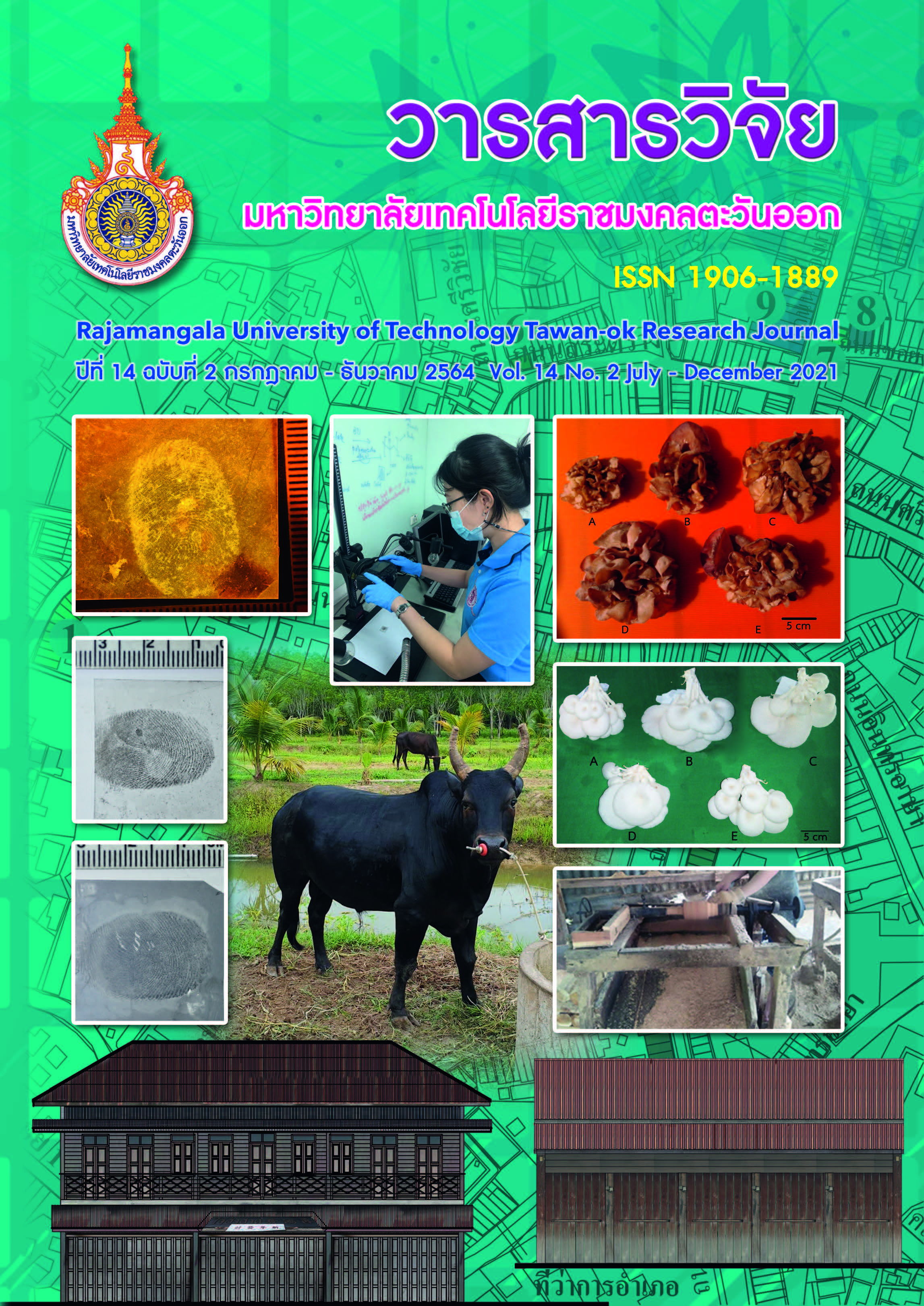The System Show Symptoms Patients of Coronavirus-19 with Finger Movements via Artificial Intelligence
Main Article Content
Abstract
At present, there is an outbreak of coronavirus -19 causing many people to get infected and get sick with this disease. Medical personnel work hard and are unable to provide complete care to patients. Each person's illness is different. This research presents the system show symptoms patients of coronavirus-19 with finger movements via artificial intelligence (AI). This system will receive 1-5 fingers up information from a webcam at a distance of not more than 2 meters. Then use artificial intelligence technology to process the number of fingers of the patient and then show the symptoms as defined on display. To prevent medical personnel from coming into direct contact with patients and also to help monitor the patient's symptoms periodically. The experiment, the fingers of the right hand average accuracy is 88.80% and experimented with the fingers of the left hand average accuracy is 88.00%. The survey respondents were satisfied with the satisfaction of the system users as the most satisfied, respectively.
Article Details
References
Tachaphetpiboont S. and Amornraksa T. 2006. Multi-modal tracking of faces for video communications. Computer vision and pattern recognition. 1-5.
Suksukont A. 2021. Face detection and objects on eyes boundary using color model with image processing. Rajamangala University of Technology Tawan-ok Research Journal. 14(1): 42-53. (in Thai)
Xiao J., Li S. and Xu Q. 2019. Video-Based Evidence Analysis and Extraction in Digital Forensic Investigation. Deep Learning: Security and Forensics Research Advances and Challenges. 7: 5432-5442.
Saini A. and Biswas M. 2019. Object detection in underwater image by detecting edges using adaptive thresholding. International Conference on Trends in Electronics and Informatics (ICOEI). 628-632.
Raghunandan A., Mohana, Raghav P. and H. V. Ravish Aradhya. 2018. Object detection algorithms for video surveillance applications. International Conference on Communication and Signal Processing (ICCSP). 563-568.
Ju T.F., Lu W.M., Chen K.H. and Guo J. 2014. Vision-based moving objects detection for intelligent automobiles and a robustness enhancing method. IEEE International Conference on Consumer Electronics – Taiwan. 75-76.
Mane S. and Mangale S. 2018. Moving object detection and tracking using convolutional neural networks. International Conference on Intelligent Computing and Control Systems (ICICCS). 1809-1813.
Kim W. J. and Kweon I. O. 2011. Moving object detection and tracking from moving camera. International Conference on Ubiquitous Robots and Ambient Intelligence (URAI). 758-759.
Heo B., Yun K. and Choi J. Y. 2017. Appearance and motion based deep learning architecture for moving object detection in moving camera. IEEE International Conference on Image Processing (ICIP). 1827- 1831.
Lee K. B. and Shin H. S. 2019. An application of a deep learning algorithm for automatic detection of unexpected accidents under bad CCTV monitoring conditions in tunnels. International Conference on Deep Learning and Machine Learning in Emerging Applications (Deep-ML). 7-11.
Sopasoap S. and Srinonchat J. 2016. Detection technique of the obstruction area in face recognition system based on YCbCr images. The 8th conference of electrical engineering network of Rajamangala University of Technology. 557-560. (in Thai)
Yang G. and Huang T.S. 2004. Human Face Detection in Complex Background. Pattern Recognition. 27(1): 53-63.
Kotropoulos C. and Pitas I. 2007. Rule-Based Face Detection in Frontal Views. Conference of Acoustics Speech and Signal Processing. 4: 2537-2540.
Chetverikov D. and Lerch A. 2003. Multiresolution Face Detection. Theoretical Foundations of Computer Vision. 69: 131-140.
Graf H.P., Chen T., Petajan E. and Cosatto E. 2005. Locating Faces and Facial Parts. Workshop Automatic Face and Gesture Recognition. 41-46.
Sakai T., Nagao M. and Fujibayashi S. 1999. Line Extraction and Pattern Detection in a Photograph. Pattern Recognition. 1: 233-248.


